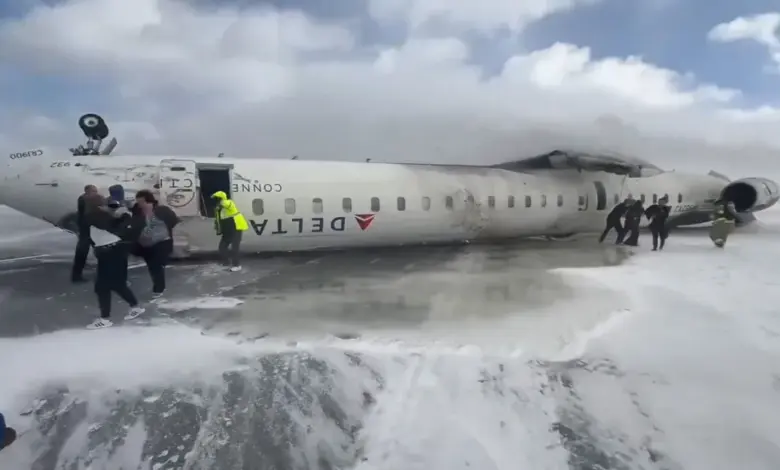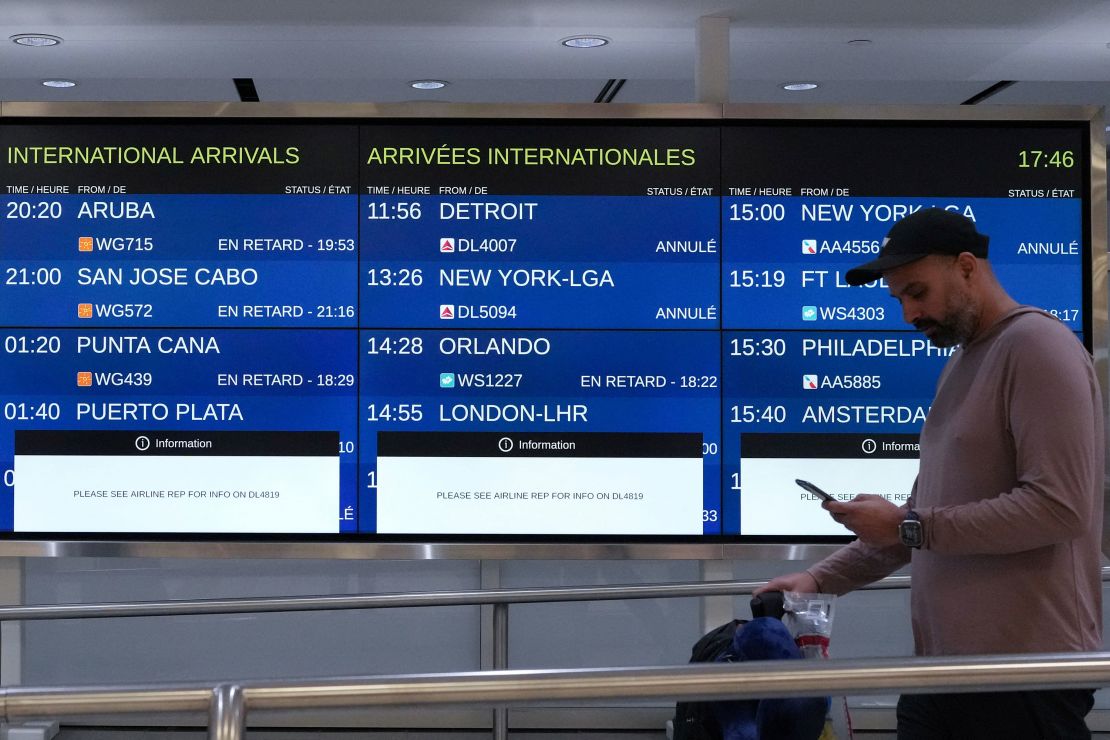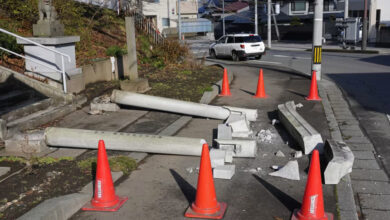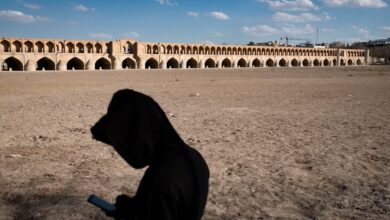
Stiff winds blew over Canada’s Toronto Pearson Airport Monday afternoon as a slim aircraft, cleared by air traffic controllers to land, and its 80 passengers and crew approached the tarmac as snow whipped in the air. But within moments, the plane crashed into the runway, sending fire crews scrambling to extinguish the rising flames around the overturned jet.
All on board the Delta flight from Minneapolis survived the crash, but it is still unclear how the aircraft was upended, leaving it belly-up, streaked with black residue and much of a wing gone. Inside, seat-belted passengers were suspended from their seats.
Initial reports indicate that there are no fatalities, Delta said in a statement Monday evening. Both the airline and Toronto Airport Fire Chief Todd Aitken noted 18 people were injured in the crash and have been transported to area hospitals.
A child was among the injured but is in good condition, the Hospital for Sick Children in Toronto said.
Peel Regional Paramedic Services, which operates where the airport is located, provided a lower figure of 15 passengers hurt, according to CNN newsgathering CBC.
CNN has reached out to Peel Paramedics and Delta Air Lines for clarity.
“We are very grateful there was no loss of life and relatively minor injuries,” Deborah Flint, CEO of the Greater Toronto Airports Authority, told reporters.
The harrowing incident briefly halted traffic at Canada’s busiest airport and is certain to raise questions amid heightened flight safety concerns in the US. The crash is the fourth major aviation accident in North America in the past month and comes three weeks after an American Airlines plane collided midair with a US Army Black Hawk helicopter in Washington, DC, killing all 67 people aboard.
In Toronto, passengers evacuated the upside-down CRJ900 aircraft as first responders doused its fuselage with foamy fire retardant. Evacuees jumped several feet from the plane’s exit doors and stumbled across the slick tarmac clutching jackets and small carry-on bags.
Endeavor Air, a regional airline for Delta, operated the flight.
Canadian and American investigators will now work to determine what upended the plane. Here’s what we know about the moments leading up to and following the collision, pieced together by flight and weather data, video footage and witness accounts.
‘The aircraft is upside down and burning’
Delta Flight 4819 departed Minneapolis/St. Paul International Airport on Monday and approached its destination at Toronto Pearson International Airport shortly after 2 p.m. local time, the airline said.
Strong winds had been buffeting Toronto all day, and airport personnel had worked through the night to clear remnants of the approximately 8 inches of snow that blanketed the airport over the weekend.
As the plane neared the airport, air traffic controllers notified its pilots of about 38 mph wind gusts. “Might be a slight bump in the glide path,” the air traffic worker said. “There will be an aircraft in front of you.”

Within two minutes, the plane had flipped. Fire erupted as the aircraft tumbled, and the plane slammed into the runway, spitting out a huge fireball and leaving passengers hung aloft in their seats, according to passengers John Nelson and Peter Koukov.
Koukov said he “didn’t know anything was the matter” until the plane hit the ground and felt like it had turned sideways, he said on CNN’s “Erin Burnett Out Front.”
“When we got finished, I was upside down, everybody else was there as well,” Nelson said. “We tried to get out of there as quickly as possible.” He added that once he was out of the plane, there was another explosion but “luckily the firefighters got out of there.”
A medical helicopter flying nearby rerouted its path to assist with the crash. As the helicopter pilots approached, air traffic control workers warned them that people were out and walking around the aircraft, according to LiveATC audio.
“Yeah, we’ve got it. The aircraft is upside down and burning,” the helicopter pilot responded.
‘We were … hanging like bats’
Fire engines raced onto the tarmac and began spraying thick sheets of white fire retardant over the aircraft’s battered fuselage. It’s unclear where the fire originated, but video shows the plane’s fiberglass frame had melted around the engine and thick black streaks stained its side.
After the aircraft came to a standstill, “we were upside down hanging like bats,” Koukov said. He was able to unbuckle himself and stand upright on the ceiling of the plane, but some people needed help getting down from their seats.
Nelson said the scene was chaotic as he and his seatmate released themselves from their belts and fell to the floor. People were yelling for them to get out of the plane, and they made a beeline towards an opening, he said.
Peter Carlson, another passenger on the Delta flight, told CBC that “it was cement and metal” in the upside-down plane. “The absolute initial feeling is just need to get out of this.”
“What I saw was everyone on that plane suddenly became very close, in terms of how to help one another, how to console one another,” Carlson told CBC.
“That was powerful, but there was definite: ‘What now? Who is leading? How do we find ourselves away from this?” he added.

Flight attendants helped passengers crawl out of open exit doors, urging people to leave belongings behind, though some still exited with bags in tow, video from Koukov shows.
Evacuees jumped from the door frames onto the snow-covered ground as sprays of fire retardant rained overhead. People hugged themselves as protection from the wind as they moved away from the plane, looking back at what they just endured.
While some people were injured, most seemed OK, Nelson said. But he was left stressed and shaky following the few seconds it took for the plane to turn over.
Canada’s busiest airport grinds to a halt
The crash prompted Toronto Pearson International to temporarily shut down all five of its runways Monday afternoon, causing delays at the country’s busiest airport and forcing several flights to divert to nearby airports.
Passengers who weren’t on the plane but at the airport before flights were canceled Monday described the accident and subsequent havoc at Pearson as “messed up,” saying that it is “going to take weeks” for the airport to recover, according to CBC.
“Have you seen luggage in Terminal 1 and Terminal 4? There is luggage everywhere,” Barb Fraser, a passenger who was supposed to head home to Vancouver, told the Canadian outlet.

More than 200 flights were canceled out of the airport by 4:15 local time, according to FlightRadar24. About 300 miles to the east, Quebec’s Montréal-Pierre Elliott Trudeau International Airport prepared to receive diversion flights.
At around 5 p.m. local time, Toronto Pearson announced three of its runways would reopen to arriving and departing flights. The remaining two runways where the crash took place will stay closed for several days as investigators analyze the scene, Flint said.
The last major aviation accident at the Toronto airport was nearly two decades ago, on August 2, 2005, according to the Associated Press, when an inbound Air France flight from Paris slid off the runway and burst into flames. All 309 people on board survived.
CNN’s Amanda Jackson, Aaron Cooper, Elise Hammond, Alexandra Skores, Max Saltman and Michael Rios contributed to this report.




